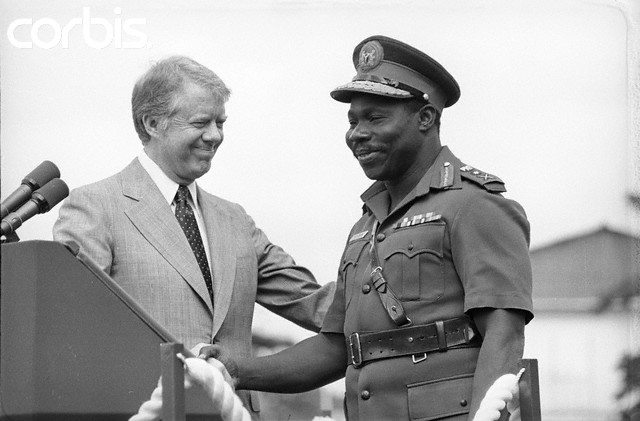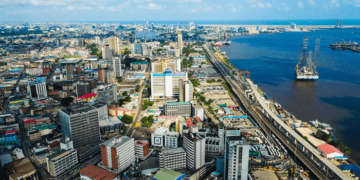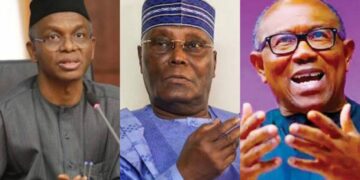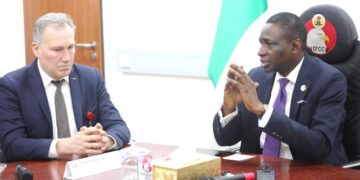Olusegun Obasanjo is a former Nigerian Army general who has twice served as Nigeria’s head of state as a military ruler from February 1976 to October 1979 and as a democratically elected President from May 1999 to May 2007.
Obasanjo’s Biography
Olusegun Mathew Okikiola Aremu Obasanjo was born circa 5th of March 1938, in Ogun State and grew up in Owu, Abeokuta. His first name, Olusegun, means “The Lord is victorious”.
Olusegun attended Baptist Boy’s High School, Abeokuta from 1952 – 1956. He did quite well academically but was unable to go to university due to his family’s low financial circumstances.
At the age of 21, he enlisted in the Nigerian Army. He attended the 6-month Short Service Commission training at Mons Officer Cadet School in Aldershot, England.
He further trained at the Royal College of Military Engineering in Chatham and School of Survey in Newbury, Royal Defense Studies, London in England, Indian Defence College, Indian Army School of Engineering, Poona and the Defence Services Staff College, Wellington. He was thereafter commissioned as an officer in the Nigerian Army.
Military Service

As a soldier, President Olusegun Obasanjo served at 1 Area Command in Kaduna. After being promoted to Chief Army Engineer, he was made commander of 2 Area Command from July 1967, which was redesignated 2 Division Rear, and then the Ibadan Garrison Organisation. He has also served with the United Nations Peacekeeping Force in the then Congo.
During the Nigerian Civil War, he commanded the Army’s 3rd Marine Commando Division that took Owerri, effectively bringing an end to the civil war.
In 1974, Brigadier Olusegun Obasanjo was appointed Federal Commissioner for Works and Housing. After the coup of July 29, 1975, he became the second-in-command to Brigadier Murtala Muhammed as the Chief of Staff, Supreme Headquarters.
On 13 February 1976, coup plotters, led by Army Col. Dimka, marked him, Murtala and other senior military personnel for assassination. Murtala was killed during the attempted coup, but Obasanjo escaped death.
He was later appointed as head of state by the Supreme Military Council. Keeping the chain of command established by Murtala, Obasanjo pledged to continue the programme for the restoration of civilian government in 1979 and to carry forward the reform programme to improve the quality of public service.
On 1st October 1979, Obasanjo handed power to Shehu Shagari, a democratically elected civilian president, hence becoming the first military head of state to transfer power peacefully to a civilian regime in Nigeria.







































Discussion about this post